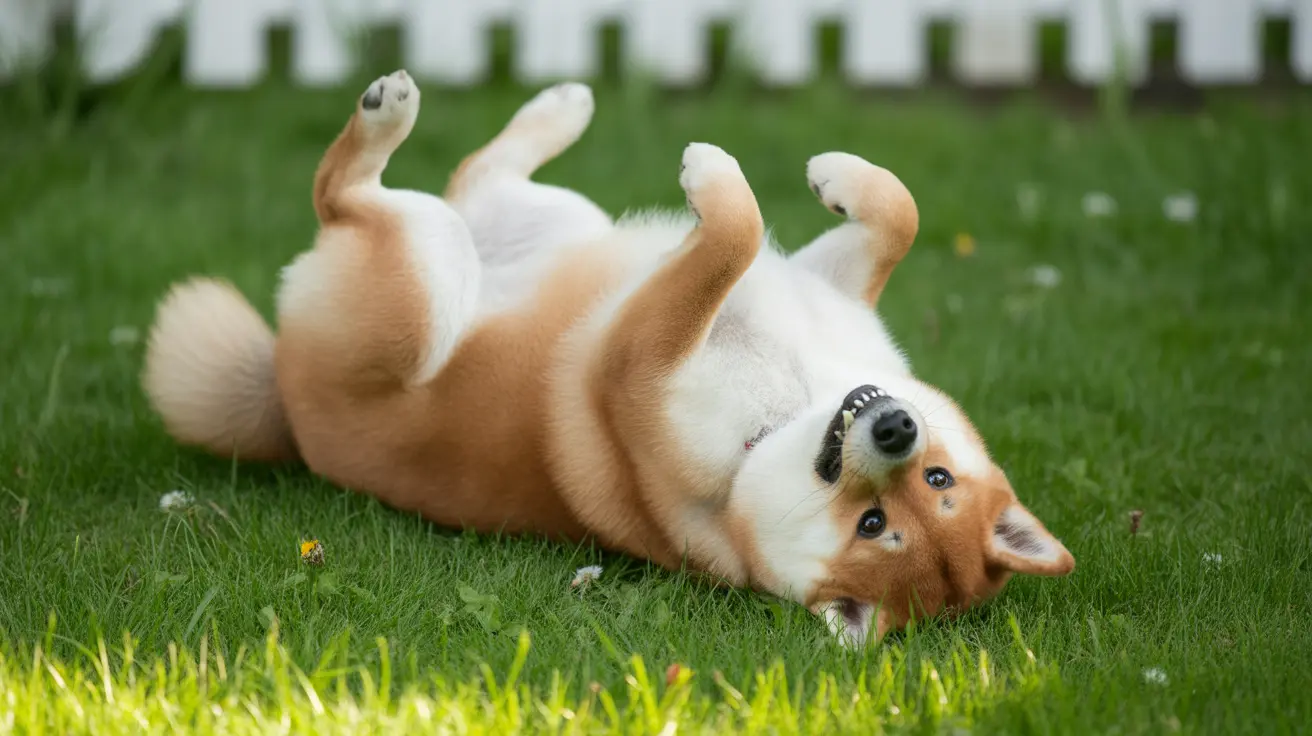Communication and Social Signals
Dogs frequently use back-rolling as a form of non-verbal communication. When meeting other dogs or people, this position can indicate submission or friendly intentions. A relaxed dog rolling over with a loose, wiggly body and exposed belly typically signals trust and an invitation for social interaction.
However, context is crucial. A dog that rolls over with stiff body language, whale eyes (showing whites), or a tucked tail may be displaying stress or appeasement behavior rather than invitation for play.
Physical Comfort and Relief
Sometimes, the explanation is purely physical. Dogs may roll on their backs to:
- Scratch an otherwise hard-to-reach itch
- Cool down on a warm surface
- Simply stretch their muscles
- Find a comfortable position for relaxation
If your dog frequently rolls and scratches, particularly in specific spots, this might indicate skin irritation or parasites requiring veterinary attention.
Scent-Related Behaviors
Dogs have inherited interesting scent-related behaviors from their wild ancestors. Rolling on their backs in grass, dirt, or even less pleasant substances serves multiple purposes:
- Masking their own scent
- Picking up new scents to share with their pack
- Marking territory with their own scent
Play and Exercise
During playtime, dogs often roll onto their backs as part of their play strategy. This position allows them to:
- Dodge playful attacks from other dogs
- Launch their own playful counterattacks
- Show excitement and happiness
- Invite interaction from their playmates
When to Be Concerned
While back-rolling is generally normal, certain patterns might indicate problems:
- Excessive rolling accompanied by scratching or biting
- Rolling combined with signs of skin irritation
- Compulsive rolling behavior
- Rolling with signs of pain or discomfort
If you notice any of these signs, consult your veterinarian to rule out medical issues like allergies, skin infections, or parasites.
Frequently Asked Questions
Why do dogs roll on their backs when they want attention or affection?
Dogs learn that rolling on their backs often results in belly rubs and attention from their owners. This behavior becomes a learned social tool to initiate positive interaction and receive affection.
Can rolling on their back be a sign that my dog is itchy or has a skin problem?
Yes, excessive rolling can indicate skin irritation, allergies, or parasites. If accompanied by scratching, redness, or hair loss, consult your veterinarian for proper diagnosis and treatment.
What does it mean when my dog rolls on their back around other dogs or strangers?
This behavior can either be a submissive gesture to show they're not a threat, or in more relaxed contexts, an invitation for social interaction. The dog's overall body language will help determine their intent.
Is my dog rolling on their back to mask scents or for other instinctive reasons?
Yes, dogs often roll on their backs to either pick up or mask scents. This behavior is inherited from their wild ancestors who used this technique for hunting and survival.
How can I tell if my dog's back-rolling is playful, submissive, or a sign of anxiety?
Observe your dog's overall body language. A playful or comfortable dog will have relaxed muscles, a wagging tail, and an open mouth. An anxious dog might show whale eyes, tense muscles, or a tucked tail while rolling.
Conclusion
Back-rolling is a multifaceted behavior that can mean different things depending on the context and your dog's body language. By paying attention to the circumstances and other behavioral cues, you can better understand your pet's needs and motivations. If you're ever concerned about excessive rolling or accompanying symptoms, don't hesitate to consult with your veterinarian.






